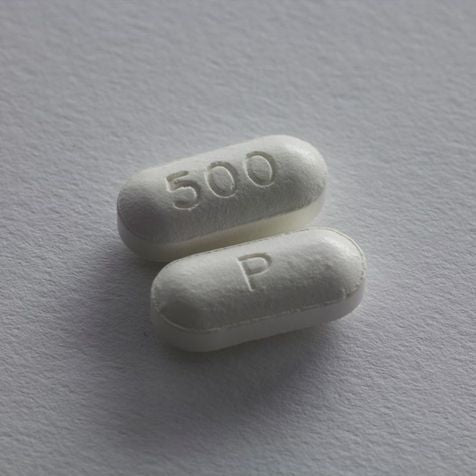FREE SHIPPING
SUBSCRIBE & SAVE 20%
MADE IN SWEDEN
Remember your password?
Subscribe to receive a guaranteed shipment of formula every month.
Enjoy a {{ discount_amount }} discount on products throughout your subscription.
Change or cancel your subscription at any time!


Like a medicine, each active ingredient has an optimal dosage range. Dose range refers to the concentration of the ingredient that is recommended to be used and is based on the product's duration of action in or on the body. A perfect example that we can all relate to is the pain and fever medicine - paracetamol. If you take half a tablet, you will not affect your headache, but if you take more than the prescribed dose of 2 tablets, you risk side effects from the medicine. Similar recommendations exist for active ingredients in skin care. What would be the point of taking a higher concentration than the recommended dose range?




Retinol (Vitamin A): A widely recognized over-the-counter form of vitamin A, known to promote collagen production in the skin and reduce the signs of fine lines and wrinkles. Also effective against acne by clearing pores and reducing inflammation.
Vitamin C (ascorbic acid): Known for its antioxidant properties that help protect the skin from environmental stressors and can also help brighten the complexion and promote the skin's collagen production.
Niacinamide (Vitamin B3): Is a form of Vitamin B3, known to reduce sebum production, lighten dark spots (hyperpigmentation) and strengthen the skin's barrier function.
AHA acids (Alpha Hydroxy Acids): These are a group of water-soluble acids that, through their exfoliating effect on the skin's surface, are known to contribute to smoother skin texture and even out skin tone. A commonly occurring AHA acid is, for example, Glycolic acid.


The concentration of active ingredients in skin care products plays a crucial role as it can affect the product's effectiveness and the risk of potential skin irritations. However, ideal concentrations may vary depending on the specific ingredient, formulation and individual skin sensitivities.
Retinol (Vitamin A): Effective concentrations typically range from 0.05%-0.3%. Higher concentrations increase the risk of skin irritation.
Vitamin C (ascorbic acid): Effective concentrations can vary between 0.5–5%. Higher concentrations may increase the risk of irritation.
Niacinamide (Vitamin B3): Niacinamide is effective in concentrations between 2–4%. Higher concentrations may increase the risk of itching and redness.
AHA acids (Alpha Hydroxy Acids): Effective concentrations range from 1-8% for glycolic acid in daily use. Too high concentrations can increase the risk of redness, burning sensation and tingling in the skin. At too high concentrations and used too often, acid treatments can also increase the risk of sun damage.
The idea that higher concentrations of an ingredient in skin care equals better results is a common marketing tactic, but it's not universally true. The effectiveness of a skin care product often depends on several factors:
Effect plateau: Many active ingredients have a concentration threshold after which there is no additional benefit. For example, salicylic acid in concentrations above 2% may not provide significantly increased benefits for acne but may increase the risk of skin irritation.
Increased risk of irritation: Higher concentrations may lead to increased risk of skin irritation and sensitivity. For example, while a higher concentration of retinol may provide faster results in terms of anti-aging benefits, it may also increase the likelihood of skin redness, dryness and flaking.
Stability and penetration: Some ingredients, such as Vitamin C and retinol, can be unstable at higher concentrations or may not penetrate the skin as effectively if not formulated properly.
Optimum Concentrations: Not all ingredients need a high concentration to be effective. Some may work best at lower percentages, such as retinol.
Personal tolerance : Everyone's skin is different. Some people can tolerate high concentrations of active substances without problems, while others can experience irritation even at lower concentrations. In the skin care world, "more" is not always "better". It's about finding the right balance and the right products adapted to individual needs.


In 2022, a research team from Manchester conducted a comparative clinical study where different concentrations of retinol serum were tested on participants with mature skin type. The concentrations tested were 0.1%, 0.3% and 0.5% retinol. In the study, they found that higher concentration does not always produce better results.
The participants who used the 0.5% retinol serum suffered significantly more side effects compared to those who used the 0.3% and 0.1%. After 8 to 12 weeks, the study clearly showed that the test participants who used the 0.3% and 0.5% concentrations showed a greater side effect profile, with the side effects of 0.5% retinol being most prominent.
In a study by research groups from Serbia and Germany, the application of cream with 2% glycolic acid and 10% glycolic acid was compared. It was then seen that the higher concentration of glycolic acid of 10% killed an important skin bacterium, S Epidermidis, which leads to an imbalanced microbiome.
With Skinome's products, we guarantee that you get a safe product that takes into account the recommended dosage range and that our active ingredients retain their effect throughout the shelf life. Therefore, we make sure to immediately cool our products after production and recommend that you, as a customer, store the products in your refrigerator for maximum effect. This ensures that your skin receives the concentration of active ingredients that gives the best results and leads to healthy skin.
Milica Lukic, Mila Filipovic, Nevena Pajic, Dominique Lunter, Dragana Bozic, SS (2021). Formulation of topical acidic products and acidification of the skin - Contribution of glycolic acid. Int J Cosmet Sci .
Kieran T Mellody 1 2, Eleanor J Bradley 3, Bezaleel Mambwe 1, Lindsay F Cotterell 1 2, Orsolya Kiss 1 2, Poonam Halai 1 2, Zeena Loftus 3, Mike Bell 3, Tamara W Griffiths 1 2, Christopher EM Griffiths 1 2 4, REBW 1 2 4. (2022). Multifaceted amelioration of cutaneous photoaging by (0.3%) retinol. Int J Cosmet Sci.
Malwina Zasada, Elzbieta Budzisz, AE-P. (2020). A Clinical Anti-Ageing Comparative Study of 0.3 and 0.5% Retinol Serums: A Clinically Controlled Trial. Skin Pharmacol Physiol .